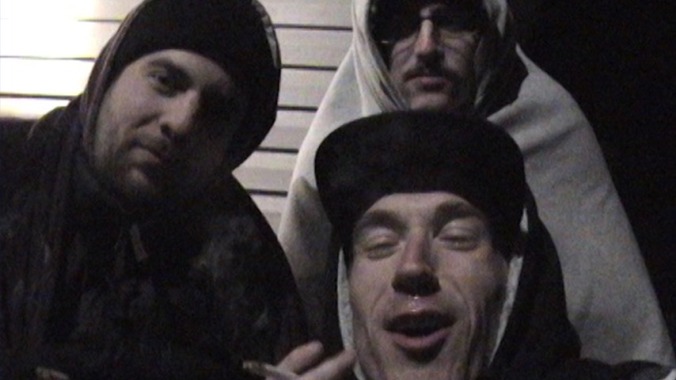Conner O’Malley’s Rap World Is the Manic Movie of the Summer
Images Courtesy of Dogma 3000
Rap World is a hangout movie. A period piece. A mockumentary with the feel of a found footage film. A movie destined to wind up on YouTube, oozing with irony, manic energy, nostalgia, and melancholy.
The year is 2009. Three pals, played by Conner O’Malley, Jack Bensinger, and Eric Rahill, and a fourth behind the camera (Danny Scharar, the film’s co-director) have one night in Tobyhanna, Pennsylvania to make it big. They have decided to record a rap album and a documentary about its making. The question is not whether they will do it, but how famous will they get?
O’Malley, in his directorial debut, plays the alpha, an aspiring rapper who works at a local movie theater chain. It is there that the film begins, and where he connects with his gleeful collaborators as they launch a night brimming with hope and energy. That all will soon fade, as most great sleepovers do. But the difference here is that the ages of the men range from their mid-20s to early-30s, adding yet another layer of blissful ignorance and a real grief for time lost to their ambitious plans for the evening.
Among the great ironies of Rap World, which premiered in New York last week before ravenous crowds at the Brooklyn Academy of Music, is that it is, in fact, the very kind of artwork—a byproduct of a crazed, friendship-fueled creative process—that the frequent collaborators are, in fact, spoofing. Thus the end result is not a punch down at delusional home music and moviemaking, but a celebration of the enterprise, giving Rap World a warm, wholesome feel, equally hilarious and heart wrenching.
-

-

-

-

-

-

-

-

-

-

-

-

-

-

-

-

-

-

-

-

-

-

-

-

-

-

-

-

-

-

-

-

-

-

-

-

-

-

-

-








































